SDR Metrics That Will Make Your Team Successful


Heather Lopez
This post was originally published in April 2019 and has been updated for accuracy and comprehensiveness.
Tracking the right SDR metrics will give you insights as to whether your reps are performing to the best of their abilities. These same SDR metrics can also help with quantifying the contributions of your sales development team to the overall sales process. This all starts with a qualitative assessment of the data from your outreach.
If you want to see your team succeed, you should focus especially on the quality of your SDR efforts and how to improve – don’t just look at how much and how often.
Below, we’ve compiled some of the main metrics we look at here at EBQ to measure how well our team can set appointments, qualify leads for sales, and grow the pipeline.

Download the SDR Metrics E-Book
Save our list of the best metrics for sales development. Read at your convenience and use them as a reference for your team.
1. How many records are touched
The first metric we assess to determine productivity is the number of records that have been touched. This gives us a clearer sense of how many conversations our SDRs are having.
While we can easily track these metrics through our phone and communication systems, the total number of touches isn’t necessarily an accurate measure of SDR performance. We want to keep our outbound volume consistently high. However, it’s difficult to tell just from that number alone if reps are using their time making quality calls with productive conversations or if they’re just making dials in order to meet their quota.
Essentially, a total number of dials won’t give you the full picture of an SDR’s performance. That’s why we have always examined the quality of those attempts and have looked for ways to continuously improve.
One major frustration within the SDR role is the relatively low number of leads who are even willing enough to just pick up the phone and have a conversation. Truly, ask any new SDR what their biggest challenge is – the lack of responses they receive is likely at the top of the list.
The key to assessing this metric is to focus on the conversations your SDRs are having. Sure, low connect rates and uninterested contacts are just a reality of the position, but conversational issues – like difficulty finding the right point of contact or being unable to get past the company’s resident gatekeeper – are challenges that can be overcome with better training and tools.
Touches vs. Dials
What do we mean when we refer to a “touch,” and how do we differentiate it from a “dial”? Let’s take a moment to explain the method we employ for tracking this metric.
When we refer to touches, we’re looking at ALL the individual ways an SDR reaches out to a lead. A phone call is a touch, a voicemail is a touch, an email, a LinkedIn message, and so on.
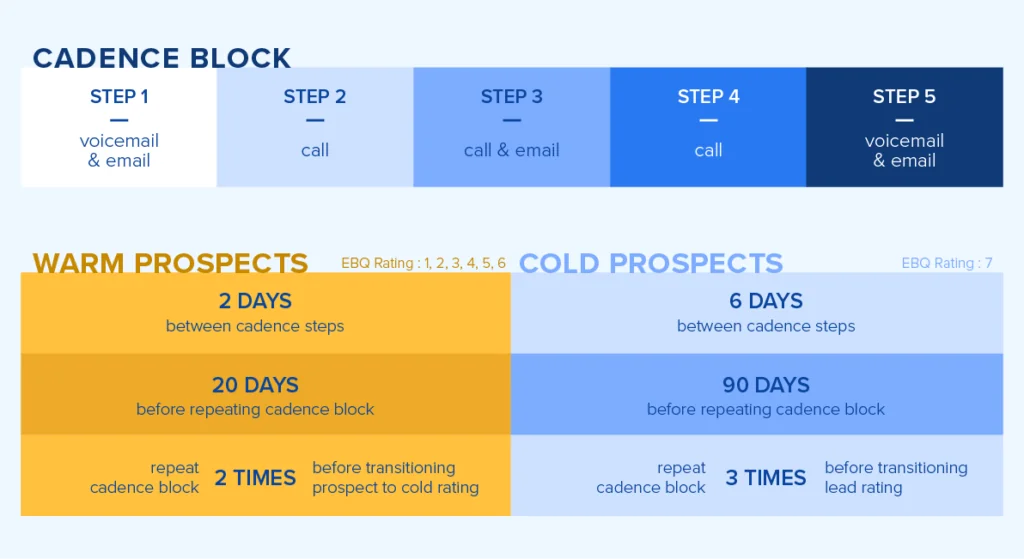
However, when we’re talking about the number of dials an SDR has made, we’re referring to each, individual periodic attempt an SDR makes to reach a customer. The important difference is that we include each touch—the voicemail, email, and message—within one attempt or “dial.”
The reason we differentiate between dials and touches is not only so we can track how many prospects our SDRs are reaching out to but also so we can see if they’re using all the possible tools at their disposal to increase their chances of success during those attempts.
2. Touch frequency over time
Looking at the average number of times records are touched gives us important insights into our call cadence strategy. It tells us:
- Whether SDRs are proactively taking the next steps on a record
- How long it takes a lead to engage with our company
- How long it takes for a lead to become a sales-qualified lead
This metric helps to alert you of any reps who are not maintaining the proper call cadence or may be giving up on contacts too soon.

It’s crucial that your reps follow the determined call cadence. Doing so effectively establishes it as a control group – all other variables being the same – so you can better track and determine which cadence works best for your buyers and how receptive your leads are.
We can then make adjustments to our outreach frequency based on the averages seen in this metric. For example, if we discover that touching cold leads five times over the course of two weeks gives us the highest possible engagement rate, then obviously we want to match our cold call cadence to this benchmark moving forward.
It’s especially helpful to look at the touches-over-time metric in relation to lead source. If we see a relatively low number of touches required to convert leads generated from a trade show, for example, we can potentially conclude that the event was a good source of quality leads who fit well with our company.
If it comes to our attention that leads from other sources, like inbound efforts or certain list purchases, are receiving the same amount of touches as the trade show leads but not converting, we can then pivot to adjust the frequency of our outreach or work to identify potential issues with our lead fit or in our messaging.
The number of touches over time helps to determine an ideal call cadence for your different types of leads. After taking a closer look, you can also typically deduce where your most promising leads are being sourced from.
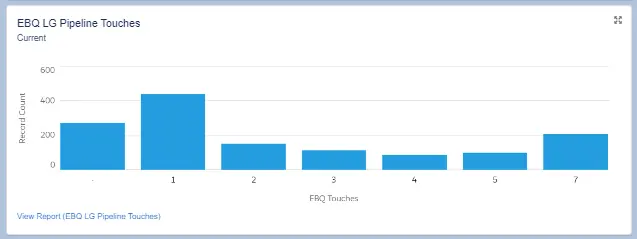
While quantitative measurements can be taken with more simplistic apps and programs, we depend on Salesforce, our CRM of choice, for essentially all of our SDR metrics and reporting.
3. Appointment completion rates
The number of sales appointments our SDRs set is important, but we are far more concerned with how many appointments are actually completed. After all, set appointments can’t teach us much about our prospects. We can get far greater insights about our customers and gain valuable feedback on our outreach methods by looking at the number of accepted meetings.
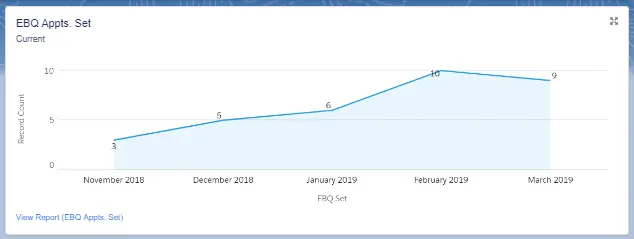
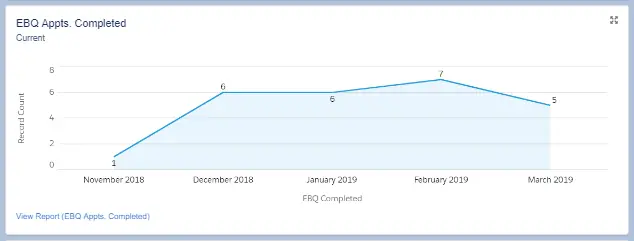
A few different factors can contribute to a low appointment completion rate, including:
- Quality of leads
- SDR performance issues
- Nature of the target industry
When looking at our rate of sales appointments completed successfully, the standard that we measure our reps against is one appointment scheduled for every 100 dials made.
Out of every 10 appointments set, we generally expect two of those meetings to be rescheduled. Additionally, as far as standard SDR metrics are concerned, one of those meetings is likely to fall through entirely.
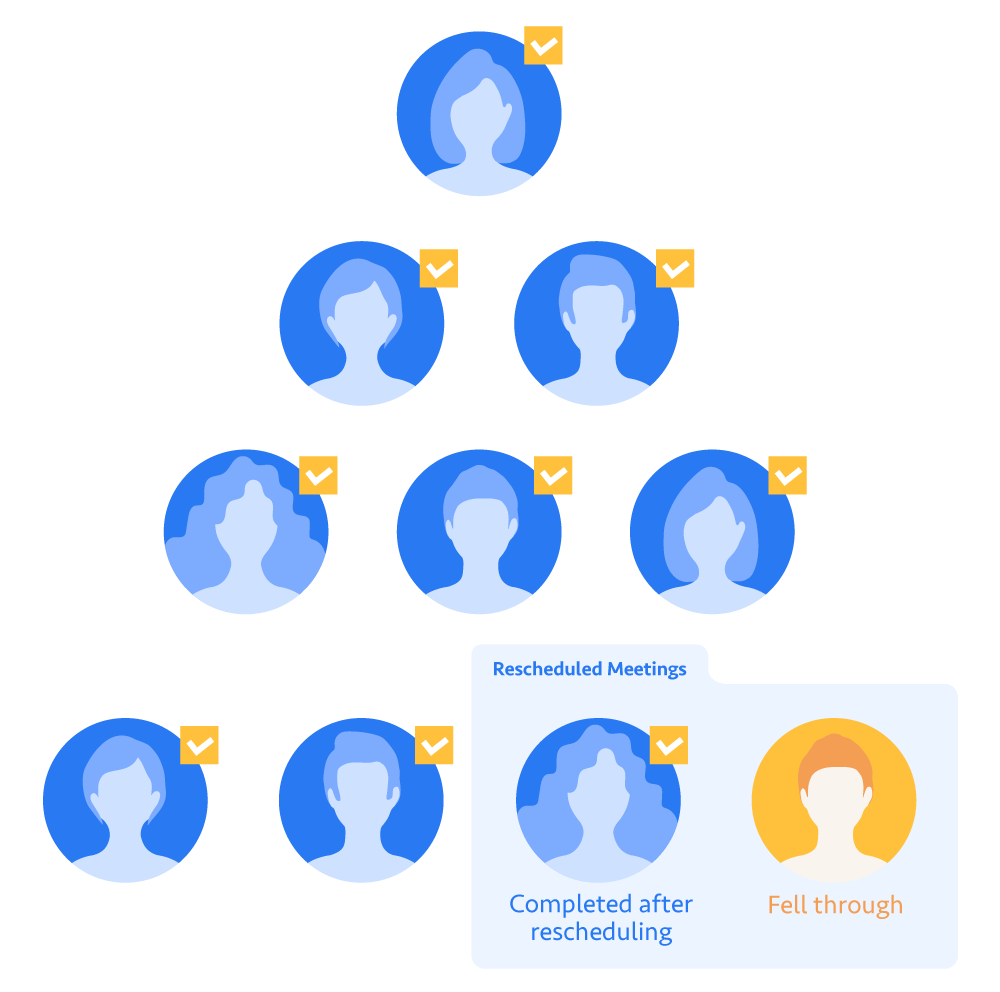
A 90% completion rate may seem like a lofty goal, but keep in mind the rate can differ widely from this standard depending on the target persona, sales cycle, selling price of an offering, and other factors.
Be sure to also keep in mind that, compared to cold leads, completed meeting rates are typically higher for marketing-qualified leads (MQLs) – leads who were brought in by marketing efforts. MQLs are typically “warm” leads that have made it past the awareness stage of the buyer’s journey.
In all cases, if you see this rate dropping lower than expected, take a closer look at the variables within your qualification process:
Lead quality
Sooner or later, you will come across leads who agreed to a meeting just to get your cold caller off the phone, even if they don’t fit your target persona and clearly have no intention of learning about your offering. This is why it is so important to have a fully developed, market-tested buyer persona, to only import lists of narrowly targeted contacts, and to tailor your inbound strategy to match.
If you look at your metric data and see a significantly lower meeting rate than you expected, it’s time to revisit the quality of the leads you are providing to your reps. No matter how skilled your SDR team may be, it’s highly unlikely that a lead will take a meeting or ultimately buy your offering if they’re just not a good fit for it.
SDR performance
Another common issue when it comes to completion rates is SDRs hurriedly pushing leads to set an appointment without properly qualifying them and ensuring their interest is genuine. If you notice a considerable discrepancy in this metric between different reps calling the same persona for the same offering, the less successful SDR likely requires further coaching on qualification procedures.
Target industry
If you’re pursuing the right leads and your SDRs are qualifying them properly, missed meeting rates can potentially be affected by the nature of your persona’s industry. As an example, industrial personas who primarily work out in the field are going to be harder to get in contact with when the time for a sales call rolls around.
We’ve drastically improved these answer rates by:
- Sending calendar invites immediately after the lead agrees to a meeting
- Verifying that calendar invites match up for both the lead and the sales rep
- Confirming participation and details the day before or the morning of the call
- Incorporating leadership into calls to ensure leads get on the line

Subscribe to EBQ's Bimonthly Newsletter

Subscribe to EBQ's Bimonthly Newsletter
Other SDR KPIs to consider
There are two other key performance indicators EBQ uses to track the effectiveness of our SDR team that we feel are worth mentioning here. We pay close attention to how many records reps add to the database and how much they contribute to pipeline progress.
Both of these metrics are relatively unique to EBQ due to how our prospecting strategy and our custom lead rating system function. That said, we’re sure you can find ways to apply these performance indicators to your team and use them as inspiration for improving your own processes.
Records added to the database
Since we use an account-based strategy, we expect our SDRs to go beyond the data provided and contribute to the pursuit of our target companies.
When on a call, your reps should perform adequate prospect discovery to determine a contact’s purchasing authority and seek out alternative points of contact who have the ability to make budget decisions – more on that here. The same can also be accomplished with thorough account research and manual prospecting via LinkedIn to find contacts in other roles at the same company.
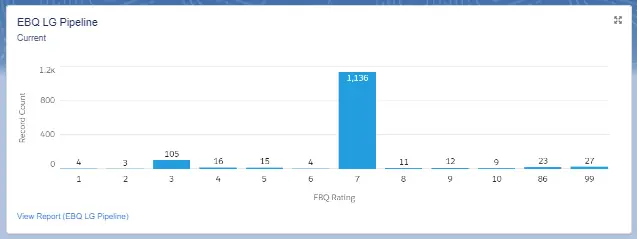
We measure the total number of records that SDRs add to our database to ensure that they are actively contributing to pipeline growth and aligning with our overall goal of streamlining sales processes for our closers – not just hitting quotas.
Pipeline movement with EBQ Rating
Some of the most compelling evidence of an SDR’s skills is their ability to move leads down the pipeline, pushing them closer to becoming an SQL. Let’s take another look at the EBRating system to see the steps our SDRs take to push buyers closer to qualification.

SDRs shouldn’t make the same calls to the same leads over and over. They should warm leads up, nudging them closer to conversion with each touch. We assess contacts’ EBRating over time to find out whether our reps are asking the right questions and providing the right information to generate interest for their leads.
Ideally, we want to see a lead’s rating go from the number they originally entered our pipeline with to the qualified rating of zero. We certainly don’t want to see their rating increase or see leads unsubscribe.
If you’re experiencing a lack of movement or too much negative movement in your pipeline, we recommend making a couple of adjustments to your outreach strategy.
- Touch cadence: Providing your team with the best practices for call cadence and making sure that they utilize them will help your SDRs come across as less intrusive on their calls and stay persistent.
- Call scripts: We never advise SDRs to follow a script verbatim, but having a guide for what to say when beginning the call will help your reps make the most of the short window of time they have to capture a lead’s attention.

Download the SDR Metrics E-Book
Save our list of the best metrics for sales development. Read at your convenience and use them as a reference for your team.
The best SDR metrics for sales development
Tracking these SDR metrics will give you a much more accurate picture of your sales development efforts:
- How many records are touched
- How many times records are touched over a period of time
- Appointment completion rates
- Number of records added to the database
- Pipeline movement using a lead rating system
If you have ambitions to grow your pipeline and deliver even more qualified meetings to your sales team, then these metrics are the metrics you should be focused on.
Quantity is still absolutely important when it comes to evaluating your SDRs and your team as a whole—high call volumes are crucial to B2B appointment setting. However, an in-depth look at the quality of your outreach and qualification processes – plus the knowledge of how to track it – is essential to your team’s success.

